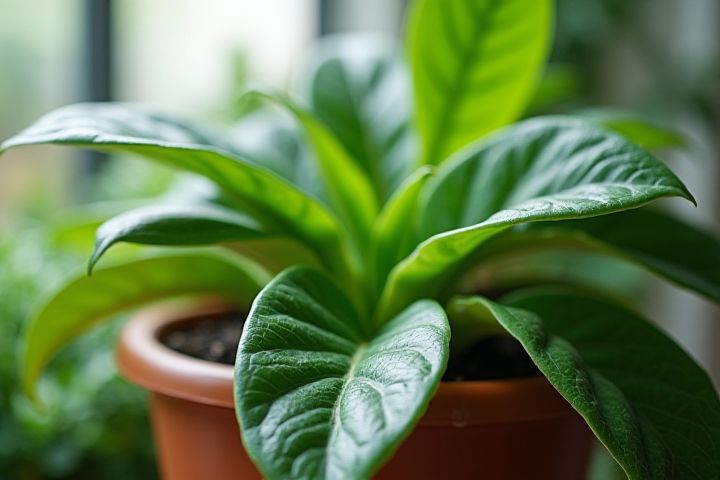
Position house plants in areas that receive adequate natural light, such as near windows or in well-lit rooms, to promote healthy growth. Ensure that plants requiring indirect light are placed away from direct sunlight to avoid leaf burn. In rooms with lower light conditions, opt for low-light tolerant species like snake plants or pothos that thrive in shaded environments. Consider air circulation; placing plants on shelves or stands can improve airflow, reducing the risk of mold and pests. Regularly evaluate the positioning based on seasonal changes, as the angle of sunlight shifts throughout the year.
Where To Position House Plants
Light Requirements
Position your house plants based on their specific light requirements to ensure optimal growth. For example, succulents and cacti thrive in bright, direct sunlight, making south-facing windows ideal, while ferns and snake plants prefer indirect light and can adapt to east-facing or shaded areas. If you have low-light environments, consider species like pothos or ZZ plants, which flourish with minimal light exposure. By strategically placing your plants in locations that mirror their natural habitats, you can enhance their health and longevity.
Humidity Levels
Position houseplants in areas that naturally maintain higher humidity levels, such as kitchens and bathrooms, where steam from cooking and showers can benefit them. Placing plants near humidifiers or within terrariums can also create an ideal microclimate for humidity-sensitive species. You can group plants together to increase localized humidity through transpiration, which is especially effective for tropical varieties. Avoid positioning houseplants near air conditioning vents or heaters, as these can create dry conditions that hinder their growth.
Temperature Consistency
Position house plants in areas of your home that maintain a consistent temperature, ideally between 65degF to 75degF (18degC to 24degC), to promote healthy growth. Avoid placing them near drafty windows, heating vents, or air conditioning units, as temperature fluctuations can stress the plants. Instead, consider setting them in rooms with moderate, stable indoor climates, such as living rooms or offices, where they can receive adequate natural light. You may also benefit from using a thermometer or hygrometer to monitor the microclimate surrounding your plants.
Air Circulation
Position houseplants in locations that maximize air circulation to promote healthy growth and prevent mold formation. Place them near windows or doors where there is a natural airflow, or in areas with ceiling fans to ensure consistent movement of air. Avoid overcrowding plants in corners or tight spaces, as this can restrict airflow and create a stale environment. Consider grouping smaller plants together for a more dynamic aesthetic while still allowing sufficient space between them for optimal ventilation.
Space Accessibility
Place your house plants in well-lit areas that are easily accessible for regular care, such as watering and pruning. Ideal spots include near windows or in open spaces that receive indirect sunlight, minimizing shadows. Ensure that the layout allows for airflow, promoting healthier growth and reducing the risk of mold. Consider using plant stands or shelves to display greenery at varying heights, adding visual interest while maintaining convenience.
Pet and Child Safety
Position houseplants out of reach of pets and children to ensure their safety, particularly when selecting species that may be toxic if ingested. Ideal locations include high shelves, hanging planters, or elevated table arrangements. Choose non-toxic plant varieties, such as spider plants, Boston ferns, and bamboo palms, to further minimize health risks. Regularly check the area for any fallen leaves or debris that could pose a choking hazard to young children or curious pets.
Growth Potential
Position house plants near windows that receive bright, indirect sunlight to maximize their growth potential. Ensure they have access to sufficient natural light, as this fuels photosynthesis and enhances overall health. In spaces with lower light, consider using grow lights to supplement the lighting conditions, helping plants thrive. Maintain proper humidity and airflow around your plants, as these factors also play a significant role in their growth and vitality.
Proximity to Other Plants
Position houseplants with care, focusing on their proximity to other plants to promote healthy growth. Consider placing larger plants where they can provide shade to smaller ones, helping to create a beneficial microclimate. Group plants with similar light and moisture requirements together, ensuring they thrive in harmony without competing for resources. Be mindful of air circulation; avoid overcrowding to prevent mold and pest issues while encouraging optimal growth conditions.
Seasonal Adjustments
Position your house plants near windows that receive optimal sunlight exposure according to the season. During winter, south-facing windows are ideal as they provide the most light, while in summer, east or west-facing locations can help prevent leaf scorch. You should also rotate your plants every few weeks to ensure all sides receive adequate light, promoting even growth. Additionally, consider temperature fluctuations; keeping your plants away from drafty windows in colder months will help maintain their health.
Room Aesthetics
Positioning house plants strategically enhances room aesthetics by creating a harmonious and inviting atmosphere. Consider placing taller plants in corners or near windows to draw the eye upward and maximize natural light absorption. Lower plants, such as succulents or ferns, look appealing on coffee tables or shelves, adding greenery without overwhelming the space. To achieve balance, aim for a mix of different heights and shapes, ensuring your plants not only beautify but also encourage a calming and lively environment.
